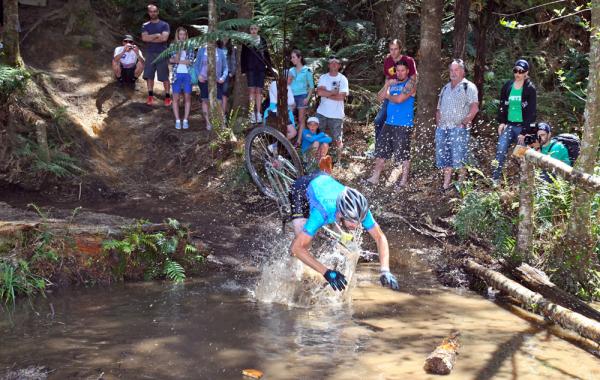Mountain bike-related injuries decline in US
New study attributes decrease to improvements in bike technology

Mountain bike-related injuries are down 56 percent according to a new national study by the Center for Injury Research and Policy at Nationwide Children's Hospital. With the decrease, 15,000 cases are still treated each year in US emergency departments.
The study covered a 14-year period from 1994 to 2007. At its peak in 1995, 23,000 mountain bike-related injuries were reported. In 2007, just 10,000 were reported.
"The large decline we found in mountain bike-related injuries is likely due to a combination of factors," said Lara McKenzie, PhD, principal investigator at the Center for Injury Research and Policy at Nationwide Children's Hospital.
"While some of the decline may be explained by a decrease in the number of people riding mountain bikes, there have also been a number of improvements to the bicycle design, such as disc brakes and dual suspension systems, that give the rider greater control of the bike and may help to reduce the incidence of injuries."
According to the study, appearing in the February 2011 issue of the American Journal of Sports Medicine, the most frequent diagnoses were fractures (27 percent), soft tissue injuries (24 percent) and lacerations (21 percent), while the most commonly injured body parts were the upper extremities (27 percent), shoulder and clavicle (20 percent) and the lower extremities (20 percent). Falls (70 percent) or being thrown off the bike (14 percent) were the most common mechanisms of injury.
Several differences in injury patterns were found among subgroups. While the majority of injuries overall were sustained by boys and men, girls and women were more likely to sustain an injury severe enough to require hospitalization. In addition, bikers aged 14 to 19 years old sustained twice as many traumatic brain injuries than bikers of other ages.
"While the number of mountain bike-related injuries has decreased, they continue to be a concern," said Dr. McKenzie, also a faculty member at The Ohio State University College of Medicine. "The gender and age differences we found represent opportunities to further reduce injuries through focused injury prevention and increasing use of protective equipment."
Get The Leadout Newsletter
The latest race content, interviews, features, reviews and expert buying guides, direct to your inbox!
This is the first study to examine a nationally representative sample of mountain bike-related injuries treated in US emergency departments. Authors of the study said further research in necessary to thoroughly understand mountain bike-related injuries and the role injury prevention intervention can play in reducing them.
Data for this study were collected from the National Electronic Injury Surveillance System (NEISS), which is operated by the US Consumer Product Safety Commission. The NEISS data set provides information on consumer product-related and sports and recreation-related injuries treated in hospital emergency departments across the country.
The study did not address the relationship between competition and mountain bike-related injuries.